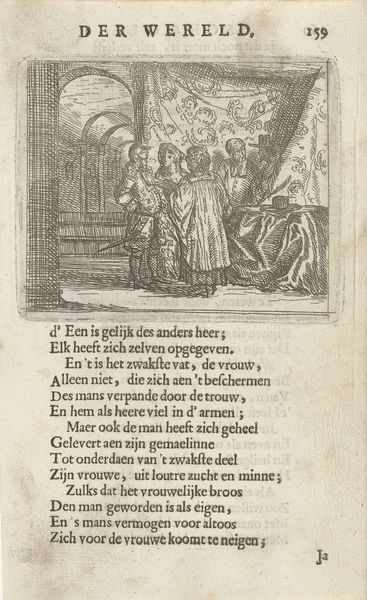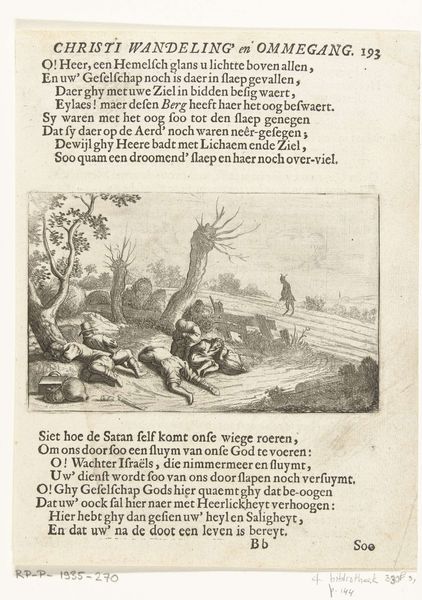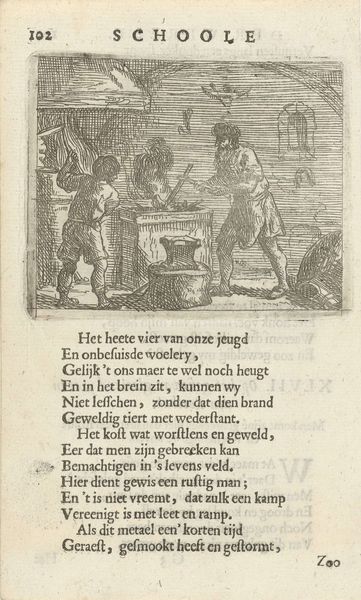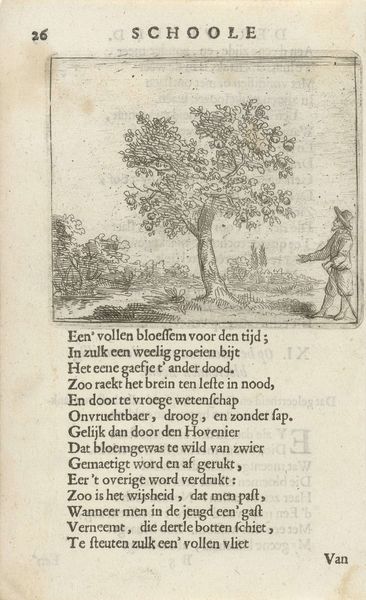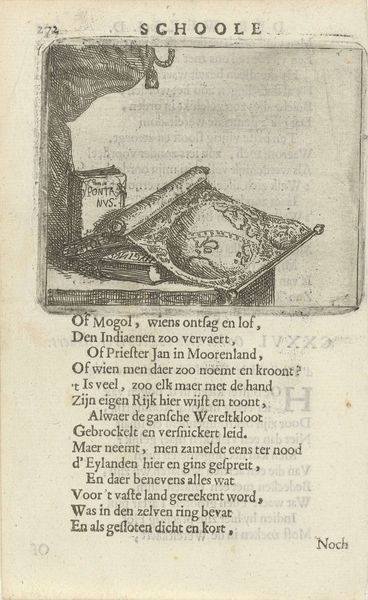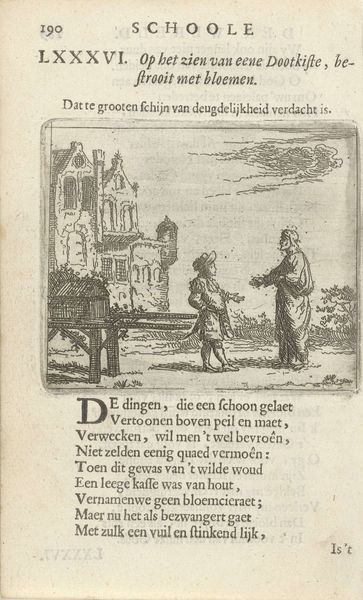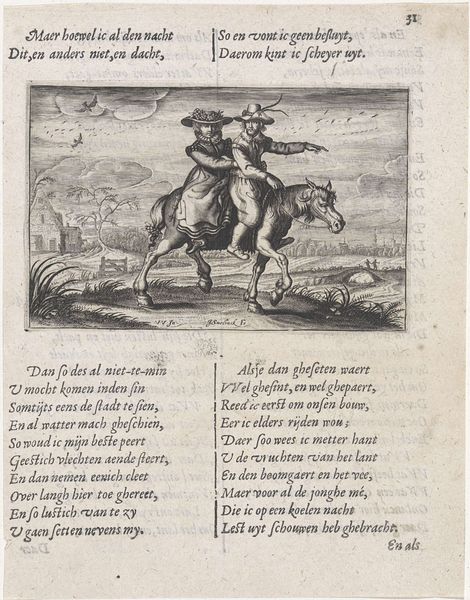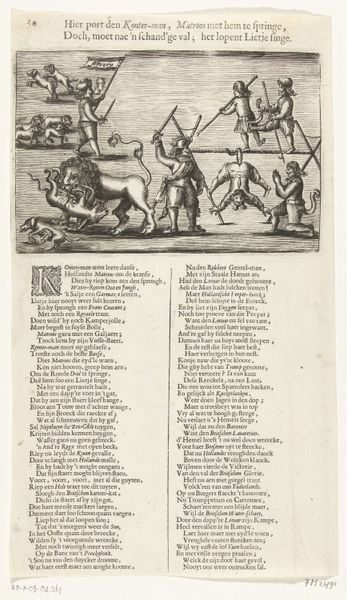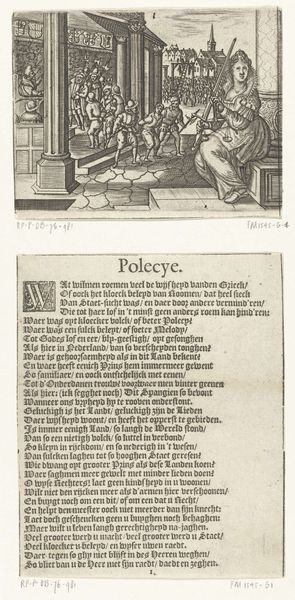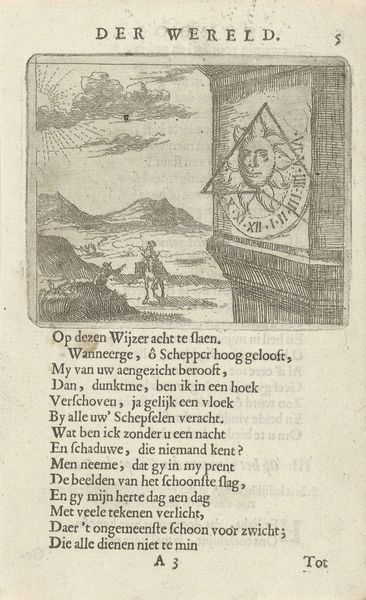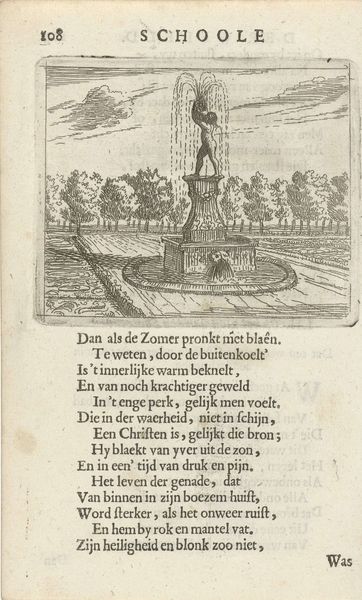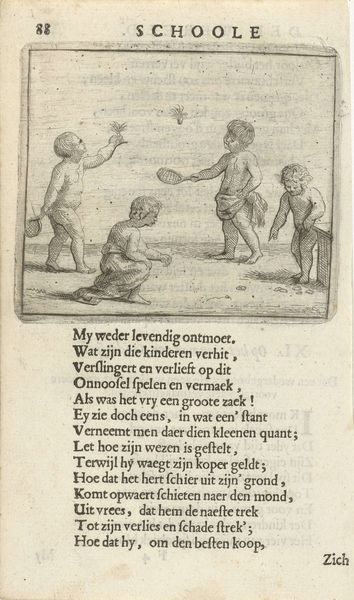
print, engraving
#
baroque
# print
#
landscape
#
figuration
#
line
#
history-painting
#
engraving
Dimensions: height 73 mm, width 84 mm, height 157 mm, width 94 mm
Copyright: Rijks Museum: Open Domain
Curator: Here we have "Standing Man by an Excavated Grave," an engraving created in 1682 by Arnold Houbraken, now held in the collection of the Rijksmuseum. My initial sense is a melancholy one, the sparseness of the etching and the scene creating a feeling of solemn reflection. Editor: I agree. The open grave, the leaning book, even the man’s posture all speak of contemplation on mortality. And look at the urn, flanked by skulls; it's all very deliberate. Urns themselves were evolving into very potent symbols of remembrance and aristocratic status during that time. This certainly engages with that visual vocabulary. Curator: Indeed. Houbraken, although now better known for his biographical writing, operated within a Dutch artistic landscape deeply engaged with moralizing themes and memento mori imagery. Consider the context of Dutch Golden Age society; we’re talking about a period shaped by both immense wealth and devastating plagues, such as the one a few years before the production of this work. Death was never far from view. Editor: The symbolism is fascinating, too. The open book resting on what appears to be the grave—perhaps scripture or even a ledger of life, open for review. It brings to mind ideas of judgement and the weighing of earthly deeds, the final accounting. Curator: Yes, that concept resonates with broader concerns of that period. The excavation suggests a society grappling with the consequences of wealth and trade. It is perhaps even suggesting a kind of collective historical reckoning with mortality in times of both peace and economic success after previous conflict. It definitely feels steeped in Dutch Calvinist visual and intellectual culture. Editor: It's a powerful and haunting piece. Considering the political stability Holland enjoyed then, that anxiety is somewhat perplexing from a modern standpoint. Yet it gives an immediate context as to the culture in which it was produced. Curator: The intersection between personal grief, religious doctrine, and broader societal concerns—Houbraken successfully distilled those complex dynamics into this seemingly simple image. Editor: Indeed. A poignant reminder that material culture provides some unique insight into the more intangible qualities of life.
Comments
No comments
Be the first to comment and join the conversation on the ultimate creative platform.
